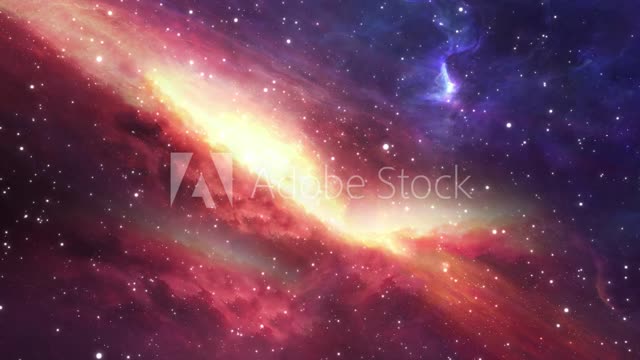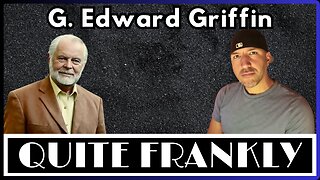Premium Only Content

Mysterious rings in new James Webb Space Te
http://ceesty.com/edFYES
By Tereza Pultarova published 2 days ago
Concentric ripples surrounding a distant star have a strange, squarish shape.
The James Webb Space Telescope captured the star WR 140 surrounded by strange concentric shells. (Image credit: NASA/ESA /CSA /Ryan Lau /JWST ERS Team /Judy Schmidt)
The James Webb Space Telescope captured mysterious concentric rings around a distant star that astronomers are still working to explain.
The image, taken in July, was released on Twitter by citizen scientist Judy Schmidt, prompting a torrent of comments and head-scratching. It shows a star known as WR140 surrounded by regular ripple-like circles that gradually fade away. The circles, however, are not perfectly round, but have a somewhat square-like feel to them, prompting speculations about possible alien origins.
"I think it's just nature doing something that is simple, but when we look at it from only one viewpoint it seems impossible, at first, to understand that it is a natural phenomenon," Schmidt told Space.com in an email. "Why is it shaped theMark McCaughrean, an interdisciplinary scientist in the James Webb Space Telescope Science Working Group and a science advisor to the European Space Agency, called the feature "bonkers" in a Twitter thread.
"The six-pointed blue structure is an artifact due to optical diffraction from the bright star WR140 in this #JWST MIRI image," he wrote. "But red curvy-yet-boxy stuff is real, a series of shells around WR140. Actually in space. Around a star."
He noted that WR140 is what astronomers call a Wolf-Rayet star, which has spat much of its hydrogen into space. These objects are also surrounded by dust, he added, which a companion star is sculpting into the strange shells.
Astronomers will know more soon thanks to a scientific paper currently under review about this mysterious phenomenon.
"Yes, those nested 'squircular' rings are real," Ryan Lau, an astronomer at NOIRLab and principal investigator of the project that acquired the observations, replied to the Twitter thread. "Our paper on this has been submitted so please stay tuned for the full story."
— Spectacular videos reveal 'Phantom Galaxy' views by James Webb Space Telescope, Hubble
— James Webb Space Telescope sniffs out carbon dioxide around an alien world
— Here's how to edit James Webb Space Telescope images
WR140, located some 5,600 light-years away from Earth in the constellation Cygnus, is a so-called variable star that periodically dims and brightens. Whether the star's variability has anything to do with the mysterious ripples remains to be seen.
The image, however, demonstrates the power of the $10 billion James Webb Space Telescope, the most powerful observatory ever sent to space, which has been hailed for its revolutionary infrared vision and super-keen eye.
Follow Tereza Pultarova on Twitter @TerezaPultarova. Follow us on Twitter @Spacedotcom and on Facebook.
Join our Space Forums to keep talking space on the latest missions, night sky and more! And if you have a news tip, correction or comment, let us know at: community@space.com.
About us https://bit.ly/3GUPFOa
Contact us +919942258153 kvk.subadhra@gmail.com
https://9eb63jydz8y8k65rv8l5-cfy3c.hop.clickbank.net
-
 51:56
51:56
Donald Trump Jr.
3 hours agoExclusive Interview with Darren Beattie, First Interview Since Joining State Dept! | TRIGGERED Ep.269
15.8K37 -
 LIVE
LIVE
Quite Frankly
5 hours ago"State of Union, Good Medicine, Judge Caprio" ft G Edward Griffin 8/21/25
451 watching -
 1:19:21
1:19:21
The Shannon Joy Show
8 hours ago🔥🔥The One & Done Kill Shot? New ‘Universal Vaccine’ & Complete Inversion As Peter Hotez WARNS Of Adverse Injury While RFK Promotes! 🔥🔥
4.06K15 -
 1:10:29
1:10:29
TheCrucible
2 hours agoThe Extravaganza! Ep. 25 (8/21/25)
50K5 -
 40:20
40:20
The White House
2 hours agoPresident Trump Joins Law Enforcement and Military Personnel in Washington, D.C.
12.6K16 -
 1:22:25
1:22:25
Kim Iversen
20 hours agoPsychic Medium Blows Lid Off "Interdimensional Beings" | Evil Spirits or Psyop?
37.8K47 -
 1:04:35
1:04:35
The Officer Tatum
3 hours agoLIVE: Trump SAVES DC, Letitia James Fine THROWN OUT + MORE | EP 160
13.2K12 -
 1:58:01
1:58:01
Redacted News
3 hours agoHIGH ALERT! Netanyahu Calls for Mass Censorship as Israel Prepares MASSIVE Invasion of Gaza City
85.9K47 -
 36:03
36:03
Kimberly Guilfoyle
4 hours agoA New Day in DC: Appeals Court Throws Out Witch Hunt Case, Live! | Ep248
24K10 -
 1:13:59
1:13:59
vivafrei
5 hours agoBig Tish Gets SPANKED! Appeal Court ANNULS $500 Million! Corruption at the FED? Trans Madness & MORE
95.4K27